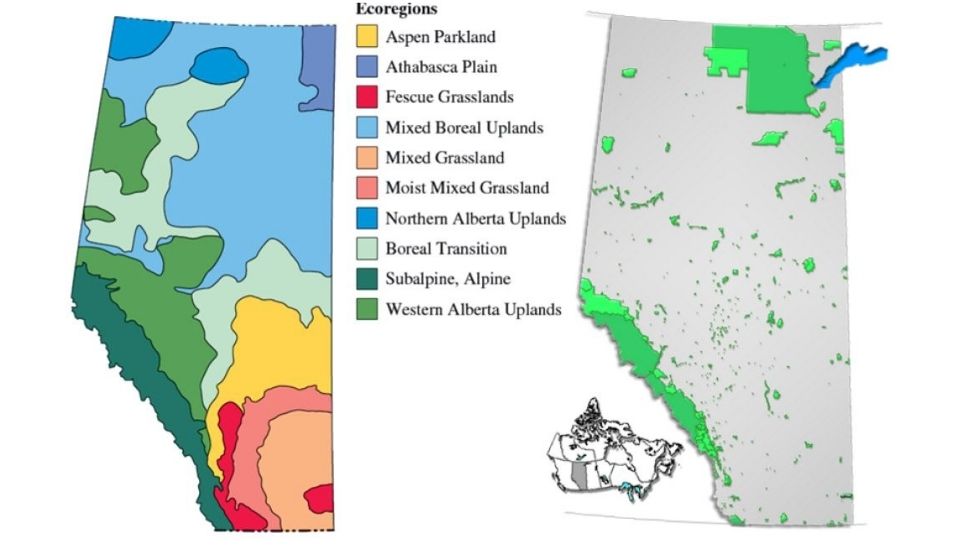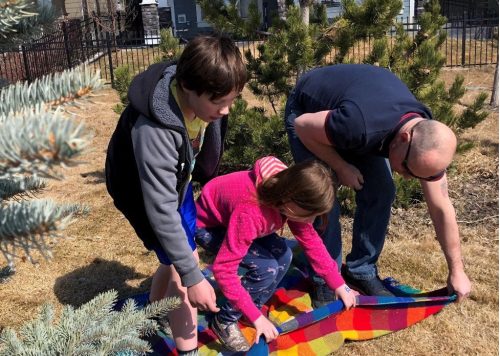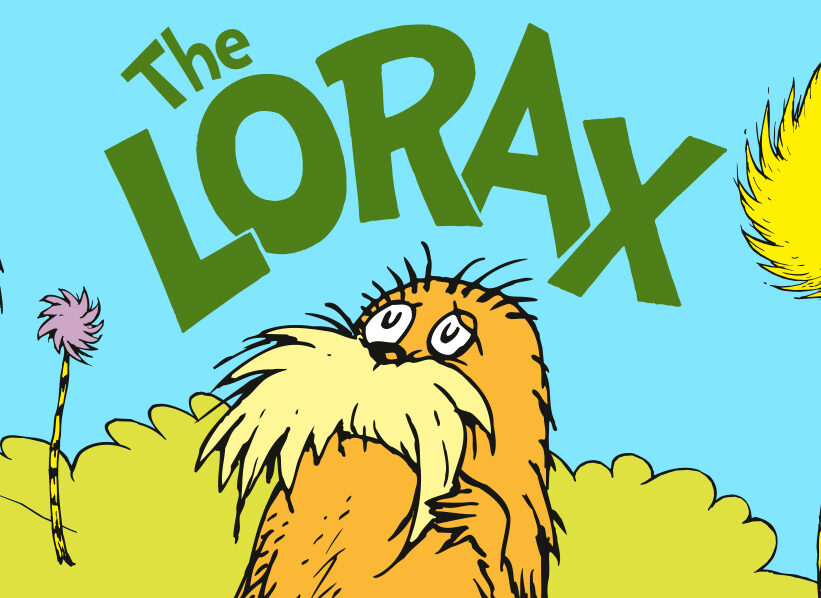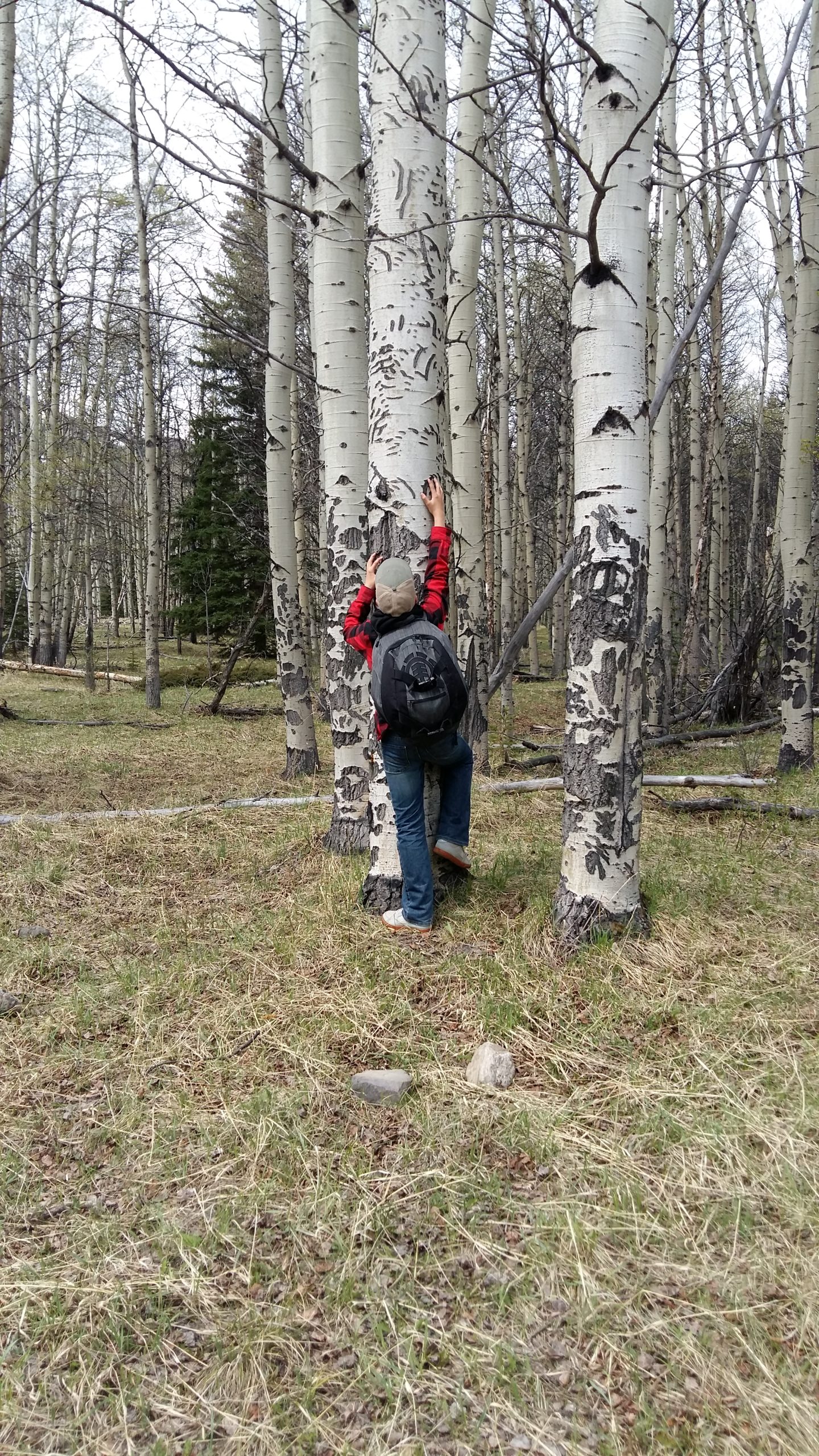Investigate Alberta's Protected Areas
PURPOSE
In this activity, students examine the concept of protection, and investigate how we protect – or, in many ways, fail to adequately protect – Alberta’s natural regions.
GRADE LEVELS
7-12
TIME NEEDED
30 minutes

Curriculum LINKS
Grade 7, Science, Unit A: Interactions & Ecosystems
Grade 9, Science, Unit A: Biological Diversity
Biology 20, Unit B: Ecosystems & Population Change
Biology 30, Unit D: Populations & Community Dynamics
MATERIALS NEEDED
Download: Natural Regions and Subregions of Alberta map (pdf)
Download: Wild Alberta map (pdf)
Download: Who Owns Land in Alberta (pdf)
Teacher Instructions
“Protected” means to look after, or to safeguard. Ask students for examples of things that they protect: younger siblings, household pets, or their own possessions are examples of this.
In the case of land, protection means ‘to protect it from dramatic change, such as development.’ We sometimes protect land by turning it into a park of some sort. The Alberta government allows human activities in many of its protected areas. Activities such as oil and gas extraction, or forestry are believed by the Canadian Parks and Wilderness Society (CPAWS) to decrease the actual protection of the area.
2: Have students examine the Wild Alberta map created by the Alberta Wilderness Association (AWA).
Use the legend to find out where Alberta’s existing protected areas are.
Except for the huge Wood Buffalo National Park (home to the endangered Whooping Crane) the majority of these areas are in the mountainous areas in the western part of the province.
Which Natural Regions are well protected by parks? Which are not well protected?
Areas such as the Rocky Mountain Natural Region are to some degree represented in protected areas. CPAWS feels that more protection is needed in the Rockies, and is currently working on protection for Kananaskis Country, and the Castle Wilderness area near Waterton. On the other hand, hardly any parks are found in the Grassland Natural Region. This area was settled extensively by pioneers and over 95% of this land is used for agriculture and farming.
Does Alberta have more area protected within national parks or provincial parks?
Alberta has far more land protected within national parks than in provincial areas. 8.5% of Alberta is in National Parks, but only 2% of Alberta lies within provincial parks. This poor record of preserving provincial land has frequently earned the Alberta government low or failing grades from the World Wildlife Fund Canada’s Endangered Spaces report card (a D- was given by WWF in 1998). The creation of new protected areas in Alberta is a high priority for CPAWS. Contact us, or visit our website, for more information on current initiatives.
3: Tell the students to examine the areas of this map that show proposed protected areas. Ask the students:
How do you think the AWA decided which areas are “wild spaces”?
The AWA chose areas that were still in their natural state, unprotected, contained important habitat, enjoyed high biodiversity of plants and animals, or represented Natural Regions not found in many other sites in the province.
What obstacles do you think might exist to the creation of these proposed protected areas?
These lands are commonly public lands that are leased by the government to one or more leaseholders, such as cattle grazers, forestry companies, and oil and gas companies. They may also be used for a variety of local uses, especially 4-wheel driving and snowmobiling. Sometimes outdoor enthusiasts speak against protection because they worry that they will be prevented from accessing their favourite areas if they become protected. Legal protection can limit the types of activities that can occur in special natural areas.
4: Ask students: Who owns the land in Alberta?
5: Show students and review the Who Owns Land in Alberta pdf.
6: Tell students:
Let’s remember that Alberta contains a number of species that are on the endangered species list. Given what you now know about who looks after the land in Alberta, which government has the most responsibility of protecting endangered species from extinction: provincial or federal government?
It turns out that this is a very good question! Over two-thirds of the land in Alberta is owned by the people of Alberta (otherwise known as crown land), while 28% is privately owned, and 8% is under federal jurisdiction. CPAWS believes that provincial and federal governments AND private landowners share responsibility to help endangered species. Students can also play an active role in endangered species conservation by making different lifestyle choices, or working to raise awareness about endangered species.
Do you think Albertans should be allowed to lease crown land?
This is an interesting area for discussion. Activities on leased land can be detrimental to the area’s environment, and lessees sometimes stand in the way of environmental protection, and create access problems for Albertans who wish to use the public land. On the other hand, lessees like ranchers are often good stewards of the land, and the Province’s economy would almost certainly suffer if lessees had to purchase the land they currently lease.
Have students debate this topic.
More Bring Nature Home for Teachers
Bring Nature Home is our online database of tried-and-tested CPAWS Southern Alberta activities! Here are some ways that you can bring nature home (or to the classroom) today!

Habitat Stretch and Shrink

How Does Habitat Impact Wildlife?

